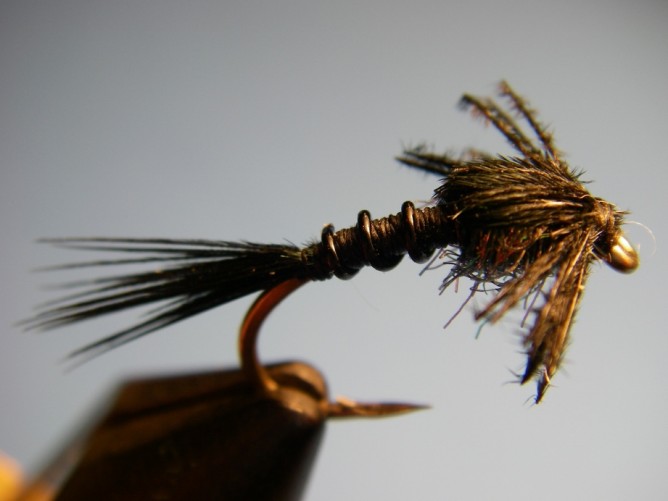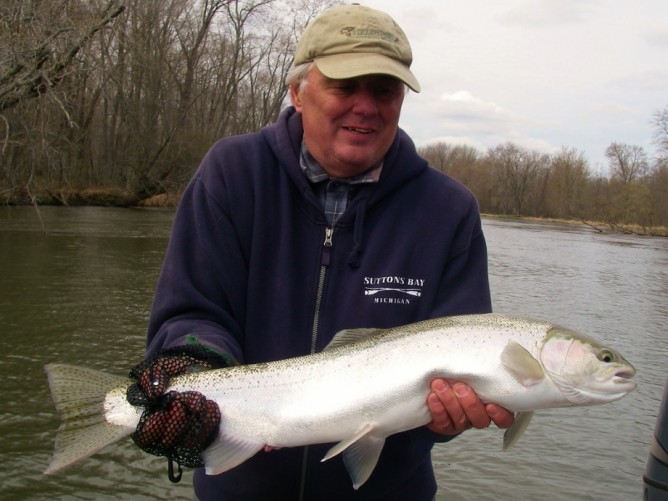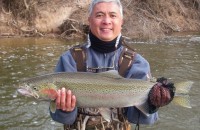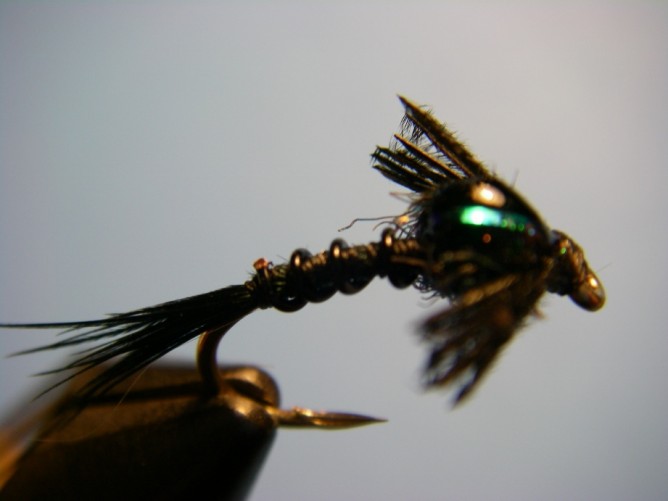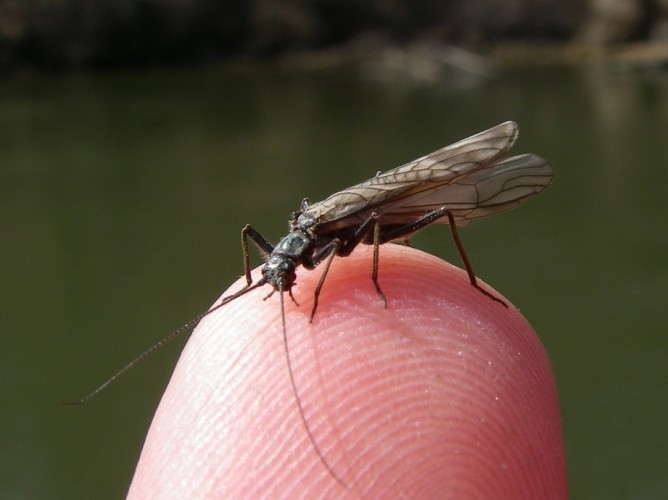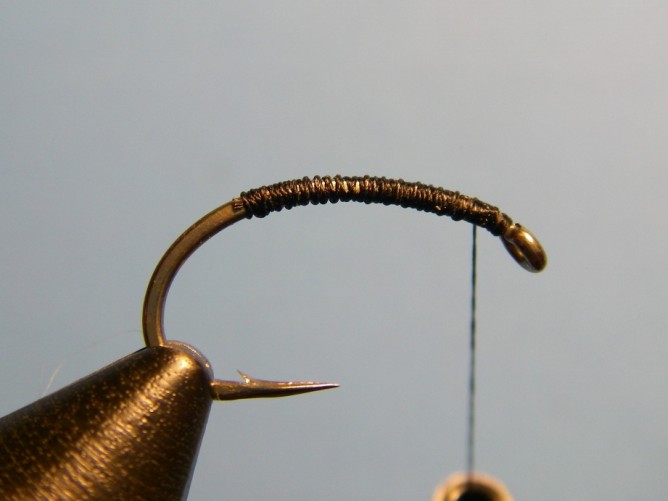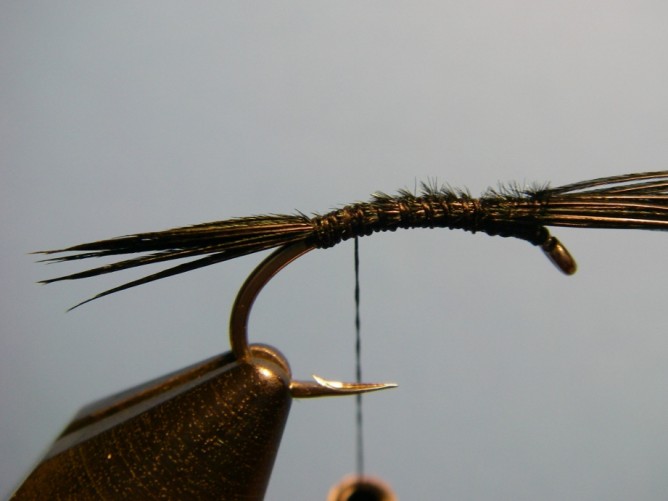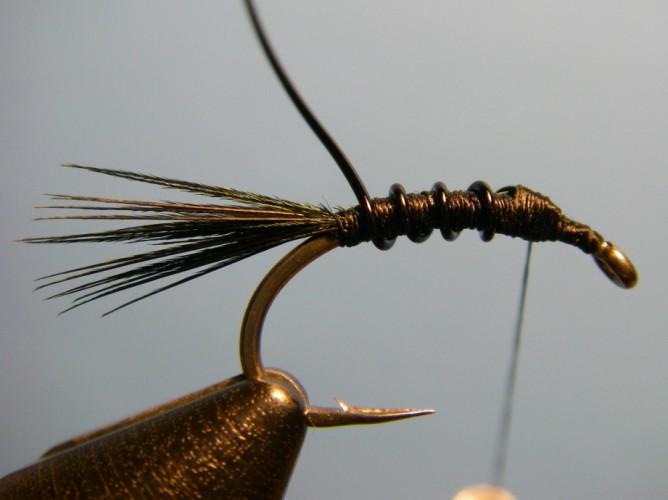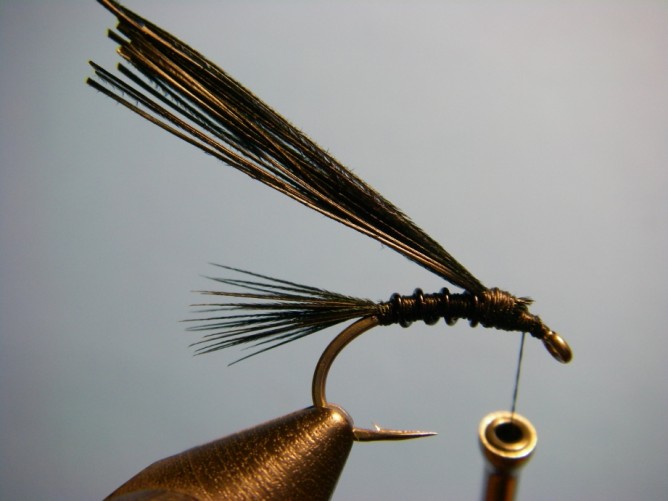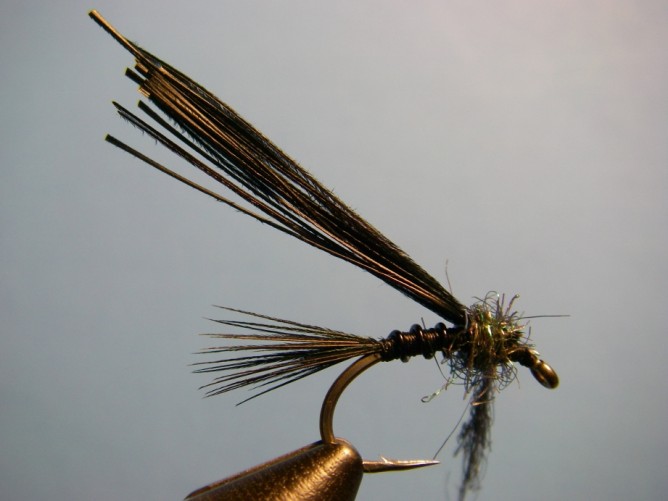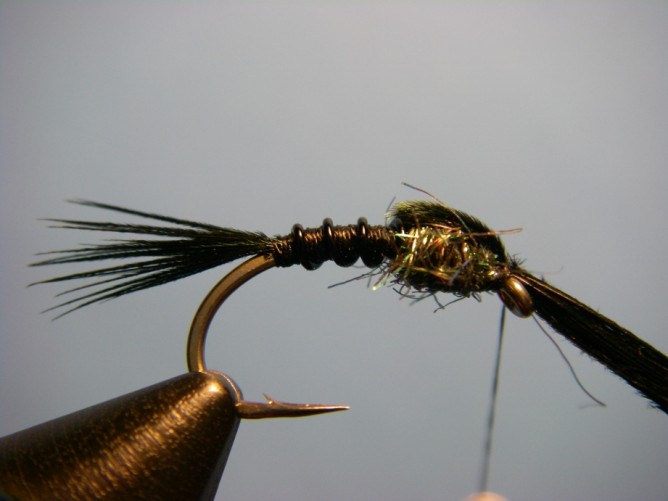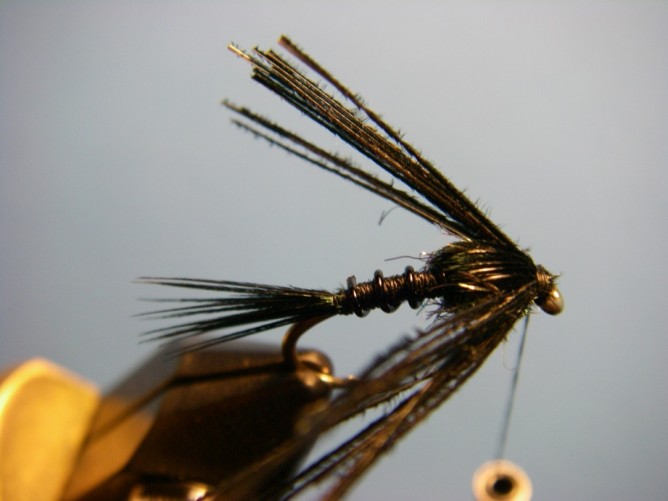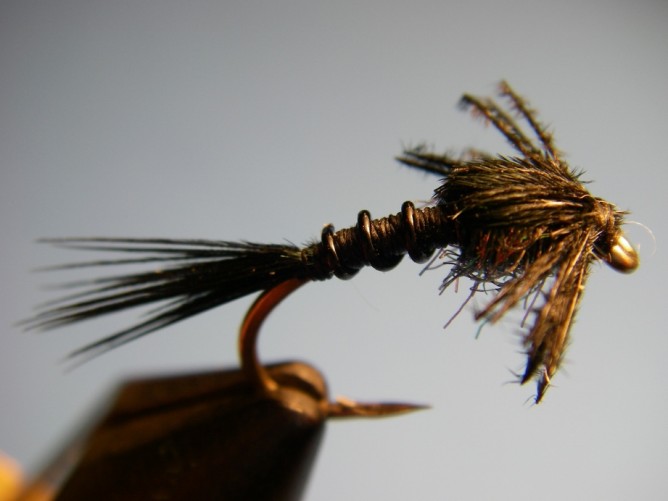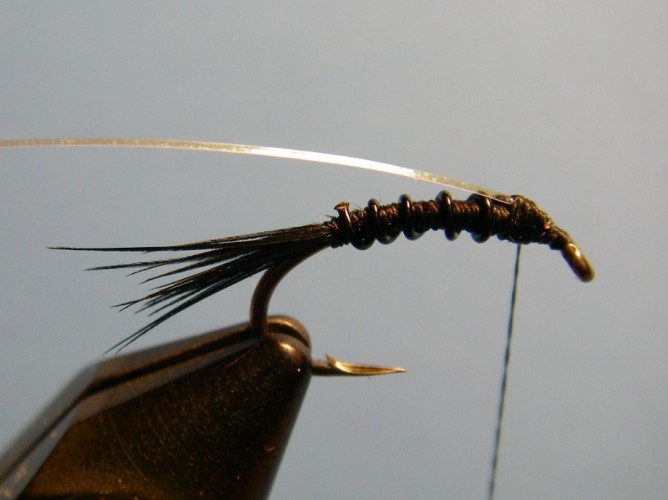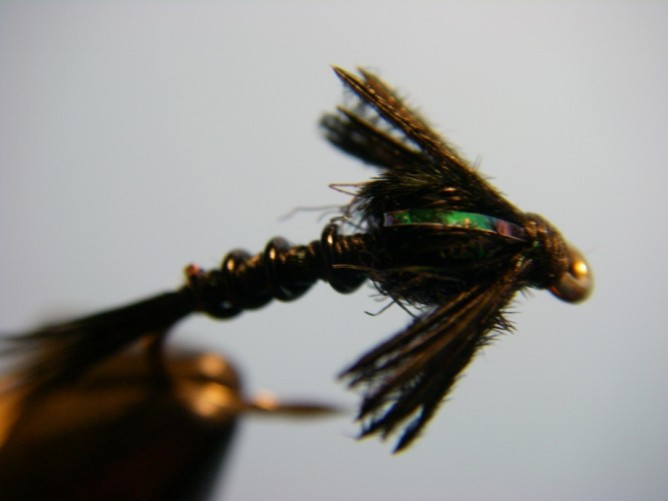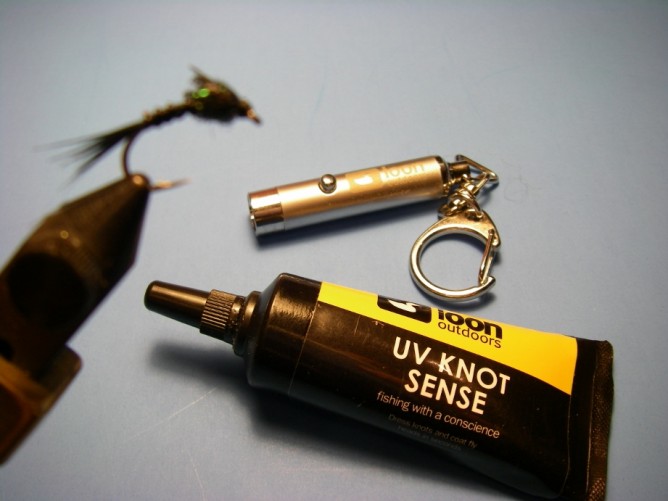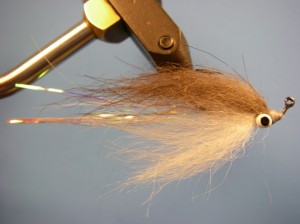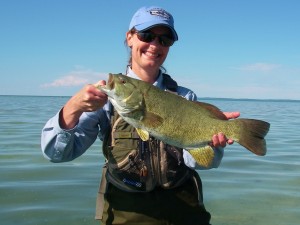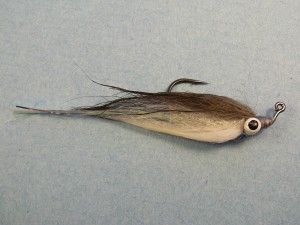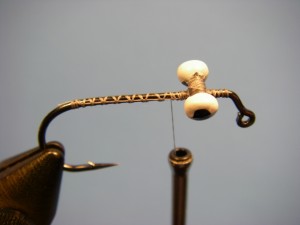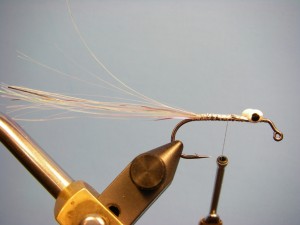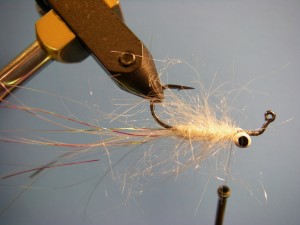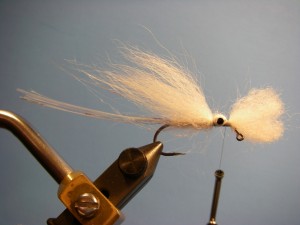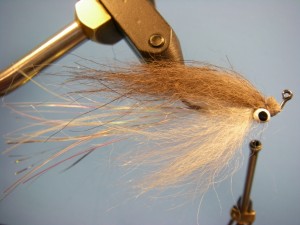It’s been a while since my last fishing report. Most of you know that Winter came in hard and a little early this year and we have barely had a break in the weather. The old saying, “What doesn’t kill you, makes you stronger,” might be appropriate as the week of sub-zero temps we experienced have made the days when the mercury rises into the 20s seem warm.
Those brave enough to get out have been able to find some winter steelhead in the local rivers (Manistee, Betsie, Boardman) thanks to the fall’s bountiful run. I imagine just about all the rivers on the West side of the state have a decent number of hold-over/winter steelhead in them. With water temps just over the freezing mark most fish are going to be condensed to the deeper holes and on the inside of any seam. Should there be some structure (wood) or rocks in it, all that much better – they feel safe in there and don’t have to fight the current as much. If fishing smaller rivers cover all those secondary holes on the way to the deeper ones but don’t spend too much time in there.
While the duck and chuck method will work this time of year, it’s the floating line with indicators/floats that seem to have the advantage as it gives you a better drag-free drift and can also help you suspend your flies above any wood or other snags in some slower water. For more on rigging, click here.
Winter – in my opinion – is a great time to fish a realistic hex nymph – they are relatively big, have good motion, and should be a realistic imitation. Other flies that have done well for me in the winter include caddis – both in bright green and cream, hare’s ear nymphs, and always an egg pattern. Once the sun (remember the sun?) comes out a little more often be sure to have some small stone flies in your box.
Should the weather keep you from fishing there are plenty of things to do to keep you engaged in the sport: tying flies, reading books, watching dvds, cleaning out your vest and gear bag or even planning a trip or two. Click here for some ideas on how to keep busy during real winters like the one we are experiencing. And if the winter-blues has you a little stir crazy grab your skis, snowshoes, or skates and get outside.
Good luck
Ted
Steelhead -With fish in local rivers Spring steelhead fishing should start as soon as the weather changes.
2014 Fishing – It’s not too early to start booking your 2014 dates – reserve you place in the boat today.

